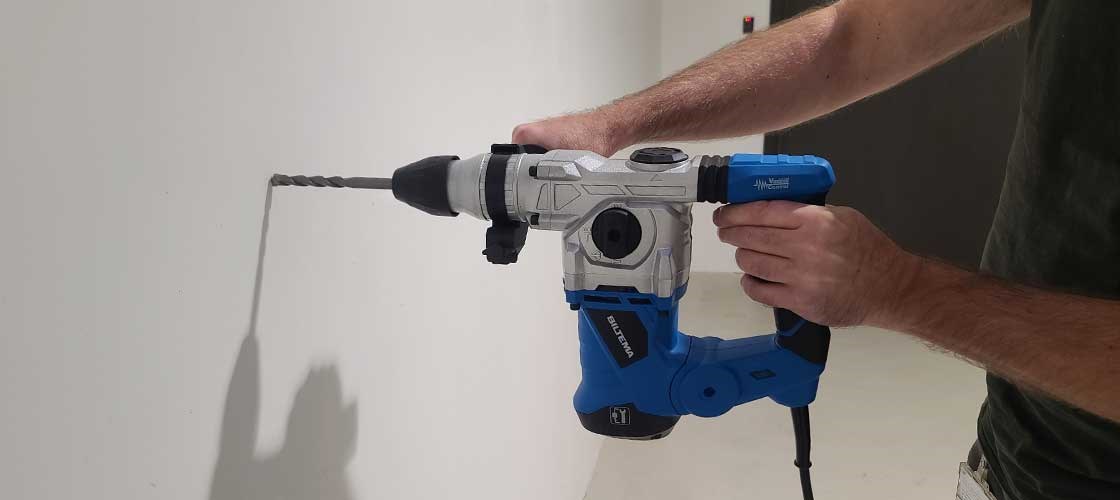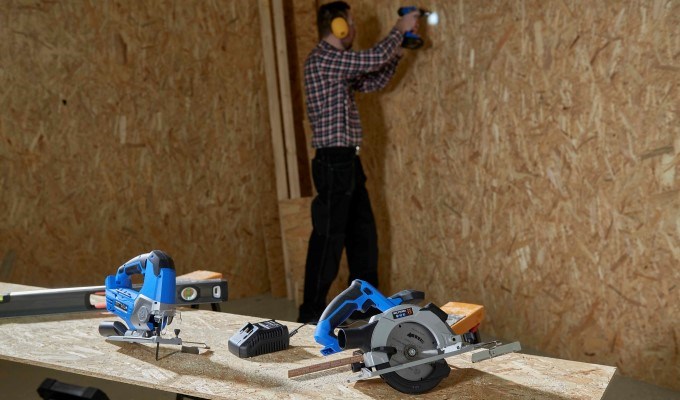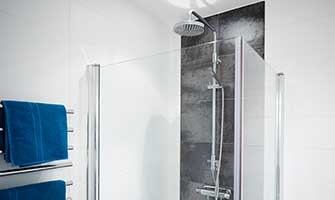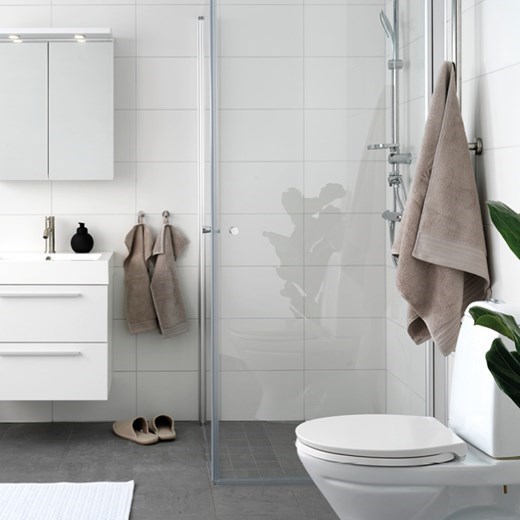Guide: Use a drill for concrete walls
How can you determine whether a wall is a concrete wall? We will explain that as well. Read on to ensure that you are well prepared the next time you drill into concrete.
Things to consider when drilling in concrete
Drilling in concrete is not something an ordinary drill or power screwdriver can manage. For best results when drilling in concrete walls, you need a special machine and the right equipment.
Many common drilling jobs require a drill that can be used on concrete. For example, when hanging a picture on the wall, mounting shelves, putting up a TV, or installing wall lights.
Drilling in concrete is different from drilling in many other materials. Concrete is a hard material and it places higher demands on the drill you use. And because concrete is hard, it can be challenging to drill a perfect hole. That’s why it’s important to use a drill designed specifically for drilling into concrete walls.
Find out if your wall is concrete before you start drilling
Before you start drilling, it is important to find out what material the wall is made of and whether it is made of concrete. Then you will also know if you need a drill for concrete walls. But how do you find out?
It’s usually easy to tell if a wall is made of concrete. Concrete walls feel very solid. If you knock on the wall and it sounds hollow, it probably isn’t a concrete wall. Then you can use an ordinary drill or screwdriver. On the other hand, if the sound is dull, the wall is most likely made of concrete or brick.
So, it’s a good idea to check the wall to be absolutely sure what type of drill you should use, such as a concrete drill or ordinary drill.
This type of drill can be used for concrete walls
When drilling in concrete, you need to use a drill designed for drilling in concrete walls. There are two types of drills you can use for the job: hammer drills and rotary hammers. They have different characteristics and uses.
Have you heard of rotary hammers, hammer drills or percussion drills? A dear child has many names. This type of drill is good for slightly more demanding drilling in concrete walls, and it can also handle drilling in bricks and tiles. A characteristic feature of rotary hammers is that they have a piston function, which allows them to strike with high force. This means that you don’t have to use as much muscle power when drilling, and most people are able to use and control a rotary hammer. It does a lot of the demanding work by itself because of the way it strikes.
You can also use an hammer drill for your concrete wall. While a rotary hammer is well suited for more demanding drilling jobs, an impact drill is perfect for simple concrete drilling. Although a hammer drill is quite powerful, it usually has less force than a rotary hammer. This means it is also suitable for drilling where you don’t necessarily need maximum impact.
How to choose the right drill for your concrete wall
Are you looking for a drill that you can use to drill into concrete? Then there are a few things you should consider to ensure that the drill is suitable for the job. We’ll guide you through a number of things you should consider.
1. Cord or battery?
Once you’ve decided on the type of drill you need for your concrete wall, you should decide on whether you want a battery-powered or electric drill.
An electric drill is usually more powerful than a cordless drill. Another advantage is that your work won’t be interrupted because the battery needs to be charged. Battery-powered models are more mobile since you are not restricted by a cord. However, you can use an extension cord if the cord is too short.
Keep in mind that a cordless drill is often more expensive, so if you’re only going to drill a few holes, an electric drill may be the best choice.
2. Depth stop
The depth stop function means that the machine helps you to not drill the holes too deep or too far into the material. It is therefore also a good idea to consider whether your drill should have such a function, as it can help you work safely and correctly.
3. Good grip
To maximise safety, you can choose a machine with a side handle. The side handle has an ergonomic function, as it makes it easier to hold the drill, and it also protects your hand when drilling.
So, there are several factors you need to consider when choosing a drill for your concrete wall. If you consider the above-mentioned, you’ll be well on your way to finding the right solution for your projects.
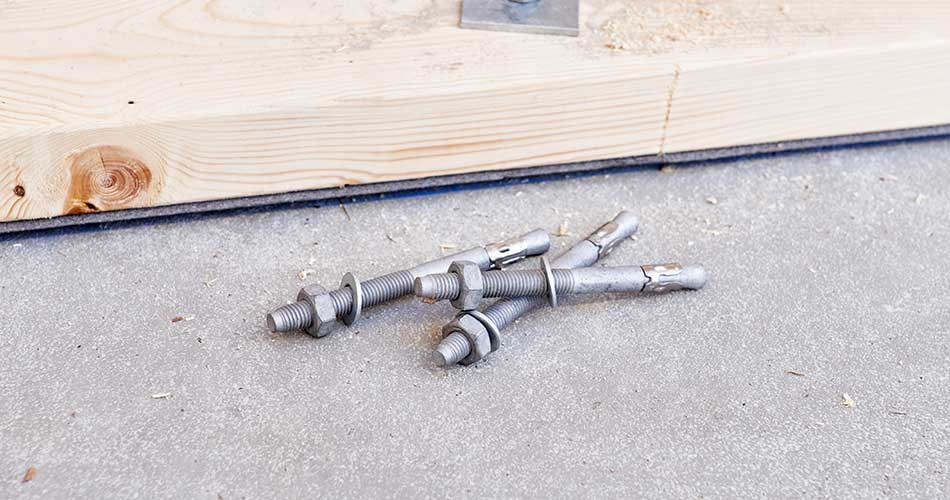
Don’t forget about accessories when drilling in hard materials such as concrete
When drilling in concrete, it’s not just the drill you need to consider. There are also numerous accessories that can make the job easier. We have compiled a list of very useful accessories for drilling in concrete.
- Concrete drill bits: The most important tool for drilling in a concrete wall is a concrete drill bit. The drill bit is designed to penetrate the solid material, and it therefore ensures that the drill hole is perfect.
- Plugs: You will also need plugs. Plugs help to secure the screws firmly in the concrete.
- Screws: The next step in the process is, of course, to have your screws close at hand. You can use concrete screws, which are specifically designed for fixing in hard material. However, concrete screws are typically used in larger installation jobs. If you just want to hang a painting on a concrete wall, you can use ordinary screws.
- Work mat: If you drill while on your knees, you can use a work mat. The mat makes your working posture more comfortable.
- Work light: Good work lighting is important for jobs requiring precision. And when drilling into a concrete wall, precision is crucial. Therefore, you should use a work light – especially when drilling in a dark room or in the evening.
- Vacuum cleaner: Just like when drilling into other types of walls, it’s a good idea to have a vacuum cleaner close by so that you don’t track drill dust around. If necessary, ask someone to hold the vacuum cleaner nozzle under the drill so that it sucks up the dust when you drill into the concrete wall.
- Sprit level: When drilling, it is important that the holes are straight. This also to drilling into a concrete wall. Therefore, make sure to have a spirit level on hand.
- Hearing protection: When you use a drill for concrete walls, it makes a lot of noise, so you should wear hearing protection if you are concerned about your hearing.
- Face mask: There is dust when drilling in concrete, and you should wear a face mask to protect your lungs.
With the right accessories and the right drill, you are well equipped for drilling in concrete.
Find a drill for concrete walls at Biltema
Are you going to drill in concrete? Then you’ll find everything you need at Biltema. We have a wide range of drills for drilling in concrete, such as hammer drills and rotary hammers, both of which are designed to drill in hard, solid materials like concrete. Our range includes several models with different functions, which means you can easily find a solution that suits your needs and your next project.
In addition to drills for concrete walls, Biltema also stocks plugs, screws, concrete screws and concrete drill bits, along with all the other products you need for drilling in concrete. The products are carefully selected and of high quality – all at low prices.
How to drill in concrete – a step-by-step guide
Are you going to drill in concrete? We have prepared a guide on how to achieve a successful result.
- Start by finding the right machine for the concrete wall – either a hammer drill or a rotary hammer, depending on the type of concrete.
- Next, get the necessary accessories. Examples of accessories you need are concrete drill bits, concrete screws and plugs. In our range, you will also find a work mat and work lights. It’s also a good idea to get out the vacuum cleaner so you can vacuum up the drilling dust when you’re done.
- Before you start, it is important that you have checked that there are no electrical cables or water pipes in the wall where you are going to drill.
- Once you’ve determined the right place to drill, you can make a small mark with a pencil, and if you’re going to drill multiple holes, you can use a spirit level to make sure the holes are level.
- The next step is to attach the right type of concrete drill bit to the drill before you start drilling into the concrete wall. Make sure the drill bit is attached correctly.
- If the drill has a depth stop, you can use the function to set the correct drilling depth. The function helps to ensure that you don’t drill holes that are too deep.
- Start drilling at low speed and with low force. It’s important that you don’t press too hard since a concrete wall drill will do most of the work for you. If you press too hard, the drill bit may break.
- Once you’ve drilled a suitably sized hole, it’s a good idea to pull out the drill bit a few times. This will help remove any dust in the hole.
- Lastly, it’s time to clean, because when you use a drill for concrete walls, it’s guaranteed to get dusty. You should also clean dust off the drill and drill bit so that they are ready to use the next time you need them.
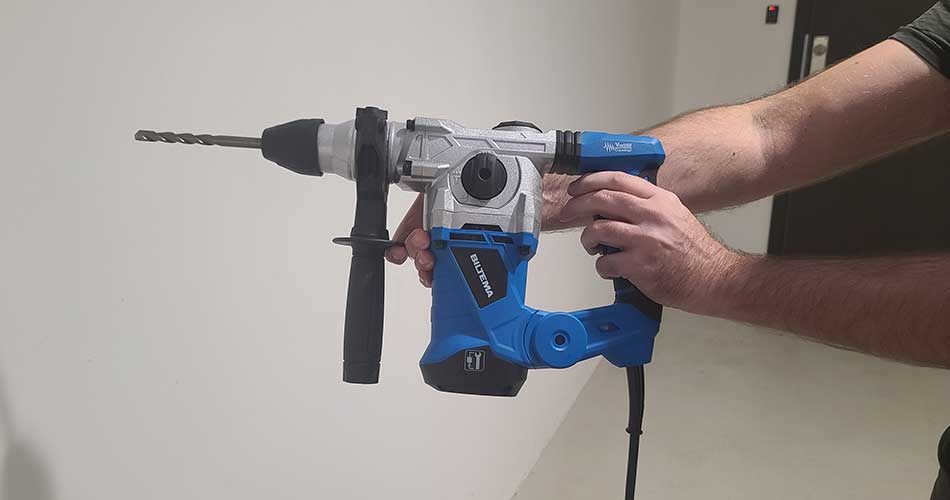
If you follow the step-by-step guide, you will be well on your way to successful drilling. Keep in mind that concrete is a hard material, so be careful when working on it.

